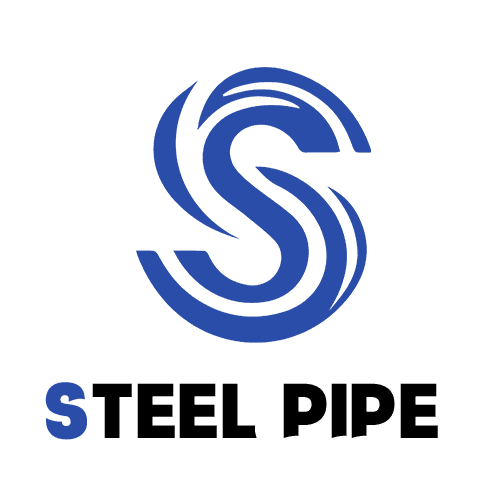Hot-rolled seamless steel pipes are typically delivered in a hot-rolled condition after undergoing heat treatment. After passing quality inspection, hot-rolled pipes are carefully handpicked by staff members. They are then surface coated with oil and subjected to multiple cold drawing experiments. The hot-rolled pipes also undergo piercing experiments after heat treatment. If the piercing enlargement is excessive, straightening is carried out to correct it. After straightening, the pipes are transported to a flaw detection machine for testing. Finally, they are labeled, arranged according to specifications, and placed in the warehouse.
① The main production processes (including key inspection processes) of hot-rolled seamless steel pipes:
Billet preparation and inspection → Billet heating → Piercing → Rolling → Reheating of steel pipes → Sizing (reducing) → Heat treatment → Straightening of finished pipes → Finishing → Inspection (non-destructive testing, physical and chemical testing, dimensional inspection) → Storage
② The main production processes of cold-rolled (drawn) seamless steel pipes:
Billet preparation → Acid pickling and lubrication → Cold rolling (drawing) → Heat treatment → Straightening → Finishing → Inspection
The production process of seamless steel pipes can generally be divided into two types: cold-drawn and hot-rolled. The production process of cold-drawn seamless steel pipes is usually more complex than that of hot-rolled ones. For cold-drawn pipes, the billet is first subjected to three-roll rolling, followed by sizing testing after extrusion. If there are no visible surface cracks, the round pipe is cut into billets of approximately one meter in length using a cutting machine. The billets then undergo an annealing process, which involves acid pickling to remove impurities. During the acid pickling process, it is important to check for excessive foaming on the surface, as it indicates that the quality of the steel pipe does not meet the corresponding standards. In terms of appearance, cold-drawn seamless steel pipes are shorter in length compared to hot-rolled ones. The wall thickness of cold-drawn pipes is generally smaller, but they have a brighter surface and less roughness, with fewer burrs.
Hot-rolled seamless steel pipes are typically delivered in a hot-rolled condition after undergoing heat treatment. After passing quality inspection, hot-rolled pipes are carefully handpicked by staff members. They are then surface coated with oil and subjected to multiple cold drawing experiments. The hot-rolled pipes also undergo piercing experiments after heat treatment. If the piercing enlargement is excessive, straightening is carried out to correct it. After straightening, the pipes are transported to a flaw detection machine for testing. Finally, they are labeled, arranged according to specifications, and placed in the warehouse.
The general production process for seamless steel pipes is as follows:
Billet preparation → Heating → Piercing → Three-roll inclined rolling, continuous rolling, or extrusion → Pipe removal → Sizing (or reducing) → Cooling → Straightening → Hydraulic testing (or ultrasonic testing) → Marking → Storage
Billet preparation → Heating → Piercing → Three-roll inclined rolling, continuous rolling, or extrusion → Pipe removal → Sizing (or reducing) → Cooling → Straightening → Hydraulic testing (or ultrasonic testing) → Marking → Storage
Seamless steel pipes are made from billets or solid pipe blanks, which are pierced to form a rough pipe. They are then processed through hot rolling, cold rolling, or cold drawing. The specifications of seamless steel pipes are represented by the outer diameter * wall thickness in millimeters.
The outer diameter of hot-rolled seamless pipes is generally larger than 32mm, with a wall thickness of 2.5-200mm. Cold-drawn seamless steel pipes can have an outer diameter of up to 6mm, with a wall thickness of up to 0.25mm. Thin-walled pipes can have an outer diameter of up to 5mm and a wall thickness smaller than 0.25mm. Cold-drawn pipes have higher dimensional accuracy compared to hot-rolled ones.
Seamless pipes are commonly made from high-quality carbon structural steels such as 10, 20, 30, 35, 45, and low-alloy structural steels such as 16Mn and 5MnV, or alloy steels such as 40Cr, 30CrMnSi, 45Mn2, and 40MnB, either through hot rolling or cold rolling. Seamless pipes made of low-carbon steels like 10 and 20 are mainly used for fluid transportation pipelines. Medium-carbon steels like 45 and 40Cr are used for manufacturing mechanical components, such as load-bearing parts of automobiles and tractors. It is important to ensure the strength and flattening test when using seamless steel pipes. Hot-rolled steel pipes are delivered in a hot-rolled or heat-treated condition, while cold-rolled pipes are delivered in a heat-treated condition.
Hot rolling, as the name suggests, involves high temperatures, resulting in lower resistance to deformation and allowing for larger deformations. Taking the rolling of steel plates as an example, continuous casting billets are typically around 230mm thick, but through rough rolling and finishing rolling, the final thickness is reduced to 1-20mm. Additionally, due to the small width-to-thickness ratio of steel plates, the dimensional accuracy requirements are relatively low, and it is less prone to plate shape issues, with a focus on controlling convexity. For structures requiring specific properties, control rolling and control cooling are generally used to control the finishing rolling temperature and final rolling temperature.
The production process for hot-rolled seamless pipes is as follows:
Billet preparation → Heating → Piercing → Heading → Annealing → Acid pickling → Coating (copper plating) → Multiple cold drawing (cold rolling) → Billet forming → Heat treatment → Straightening → Hydraulic testing (or ultrasonic testing) → Marking → Storage.
